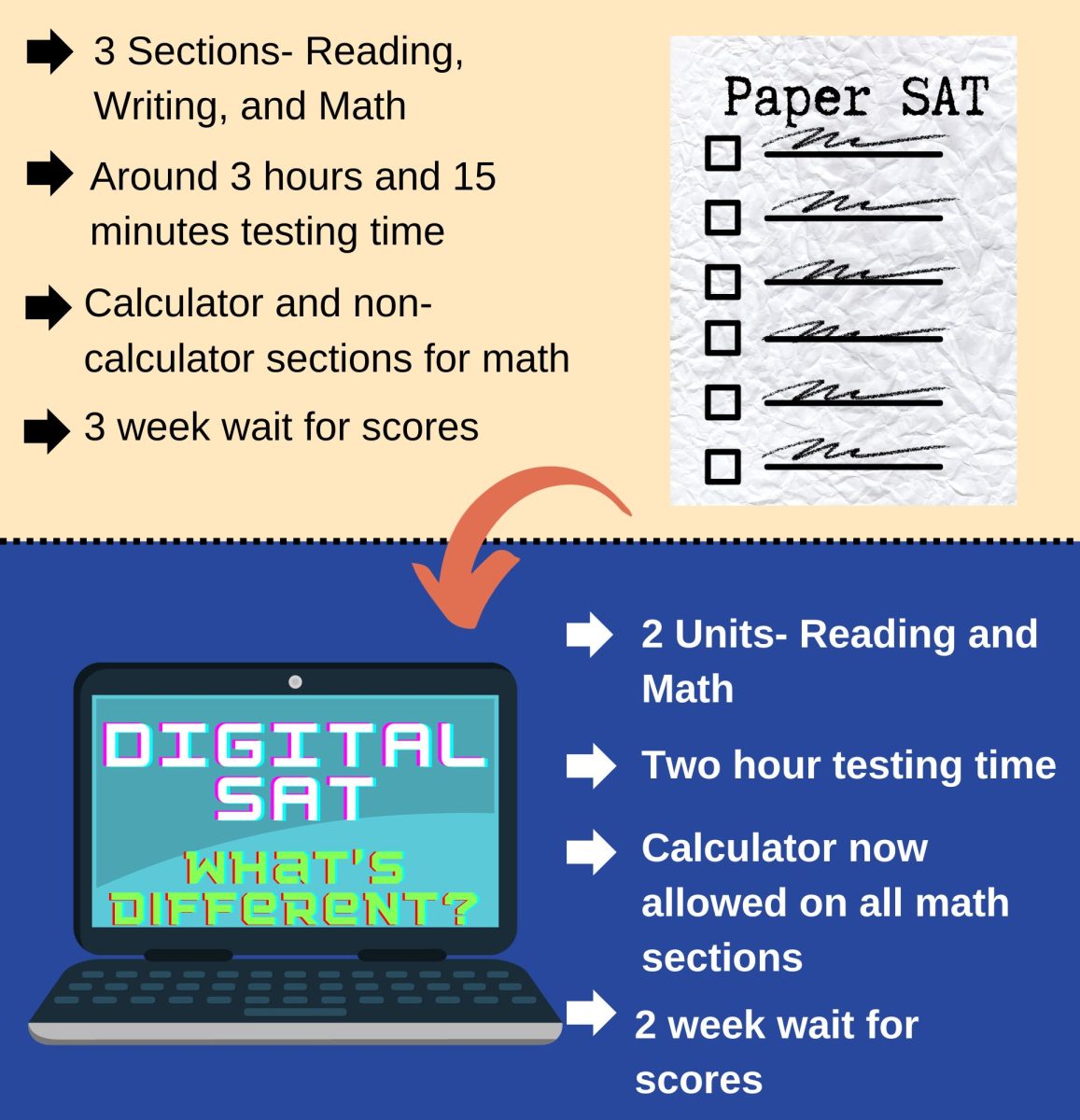One of the most important tests any high schooler can take is the SAT. While many colleges and universities remain test-optional, a good test score can still give an edge to students in their application.
In January of 2022, College Board announced its plan to move to digital testing for the SAT during the 2023-2024 school year. Along with the shift in physical format, the content and structure of the test are also seeing major changes.
A digital SAT removes much of the unnecessary stress involved in the test. Students no longer have to worry about accidentally filling in the wrong bubble on the answer sheet, or that they had not erased an incorrect answer enough.
According to College Board, students receive results from the paper SAT about three weeks after their test date, compared to just two weeks with the digital SAT. This change gives students slightly more time to decide what they want to do with their scores once they receive them. The quicker results also take some of the anxiety out of the wait.
The new format of the test also allows testing to conclude faster. Testing will now last two hours and fourteen minutes as opposed to three hours and fifteen minutes.
Before, the SAT was split into three sections, with Reading, Writing, and Math. However, now there are only two sections: one consisting of both Reading and Writing and the other consisting of Math. The reading portions in the Reading and Writing section are also far shorter than they were in the past, and both math sections now allow calculator usage, with the test providing access to the Desmos graphing calculator.
Another significant change to the SAT is the implementation of an adaptive portion. Each section of the test will now have two modules. The difficulty of the second module will depend on individual student performance in the first module. Compared to the old, fully standardized SAT, this is drastically different.
While these changes are helpful to students, most have been preparing for the SAT by taking the paper PSAT. Some underclassmen have also taken digital versions of the PSAT but with the previous format. This means that juniors have only taken a single PSAT in the same format as the SAT they will take in the spring. The sudden change in format leaves juniors with far less preparation than prior classes had for their SAT.
With the introduction of digital testing comes the possibility of technical difficulties. While College Board prepared for internet outages by having the testing program download the test to a testing device ahead of time, other issues can still delay student testing.
During the administration of the digital PSAT on Oct. 11, web issues caused multiple schools to have delayed testing times, including North. While the problems were quickly resolved, it reveals the inherent risk of digital tests.
If a test device fails, the test will autosave and can be resumed at a later time, but students are still inconvenienced.
While the digital SAT offers multiple advantages over the paper SAT, it has issues that were not present on the paper SAT and could potentially cause further problems with testing in the future.
The purpose of our staff editorials is to start a conversation. The editorial topic and stance are discussed and agreed on by all members of the editorial board. Stargazer credits the writers of any staff editorials; however, the editorial does not represent the views of any individual writers and instead reflects the consensus of the editorial staff as a whole. To join the conversation, you can leave comments on any articles according to the guidelines found in our Editorial Policy.










